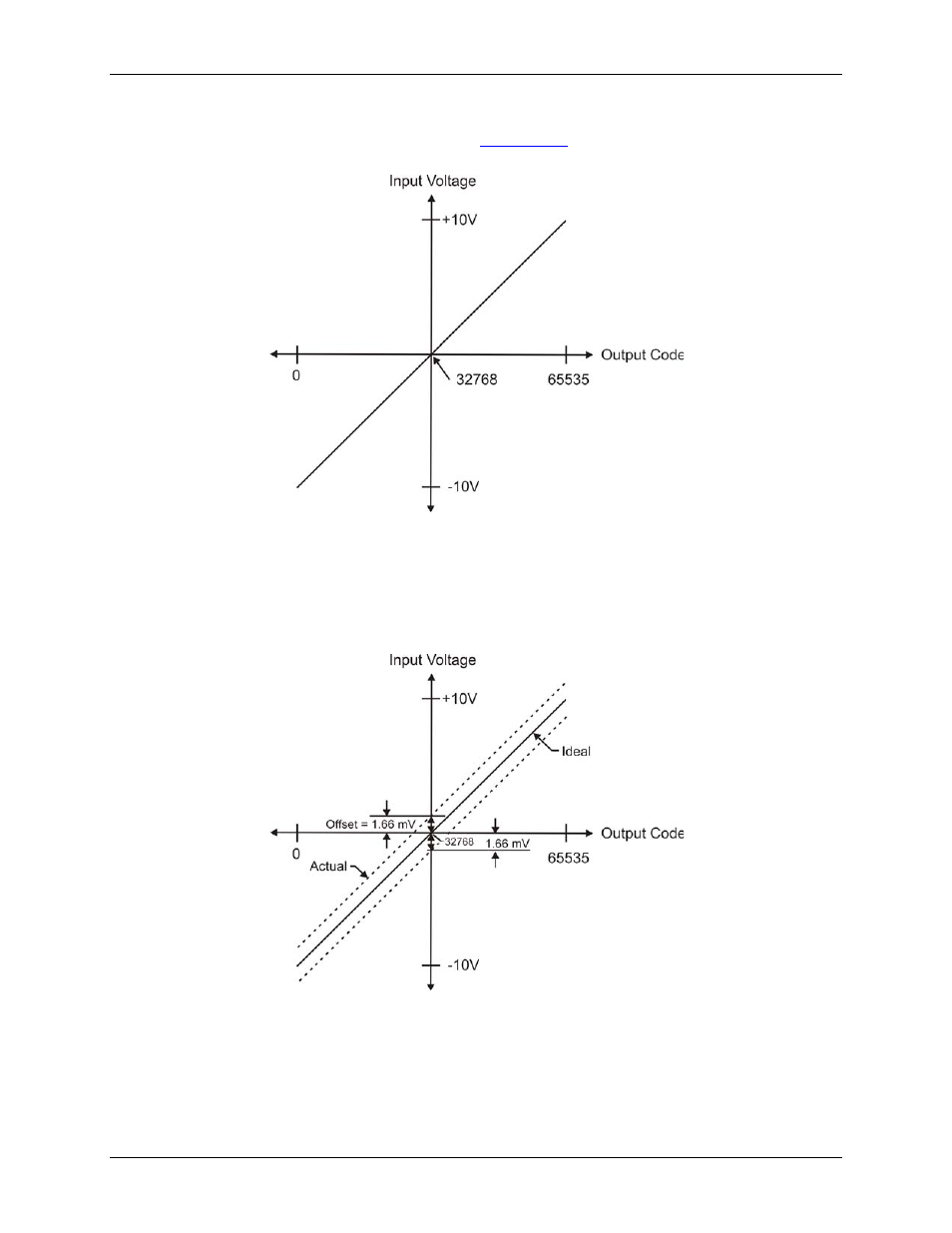Measurement Computing USB-1608FS User Manual
Page 15

USB-1608FS User's Guide
15
Figure 7 shows an ideal, error-free, USB-1608FS transfer function. The typical calibrated accuracy of the
USB-1608FS is range-dependent, as explained in the "
" chapter. We use a ±10 V range as an
example of what you can expect when performing a measurement in this range.
Figure 7. Ideal ADC transfer function
The USB-1608FS offset error is measured at mid-scale. Ideally, a zero volt input should produce an output code
of 32768. Any deviation from this is an offset error. Figure 8 shows the USB-1608FS transfer function with an
offset error. The typical offset error specification for the USB-1608FS on the ±10 V range is ±1.66 mV. Offset
error affects all codes equally by shifting the entire transfer function up or down along the input voltage axis.
The accuracy plots in Figure 8 are drawn for clarity and are not drawn to scale.
Figure 8. ADC transfer function with offset error
Gain error is a change in the slope of the transfer function from the ideal, and is typically expressed as a
percentage of full-scale. Figure 9 shows the USB-1608FS transfer function with gain error. Gain error is easily
converted to voltage by multiplying the full-scale input (±10 V) by the error.
The accuracy plots in Figure 9 are drawn for clarity and are not drawn to scale.
